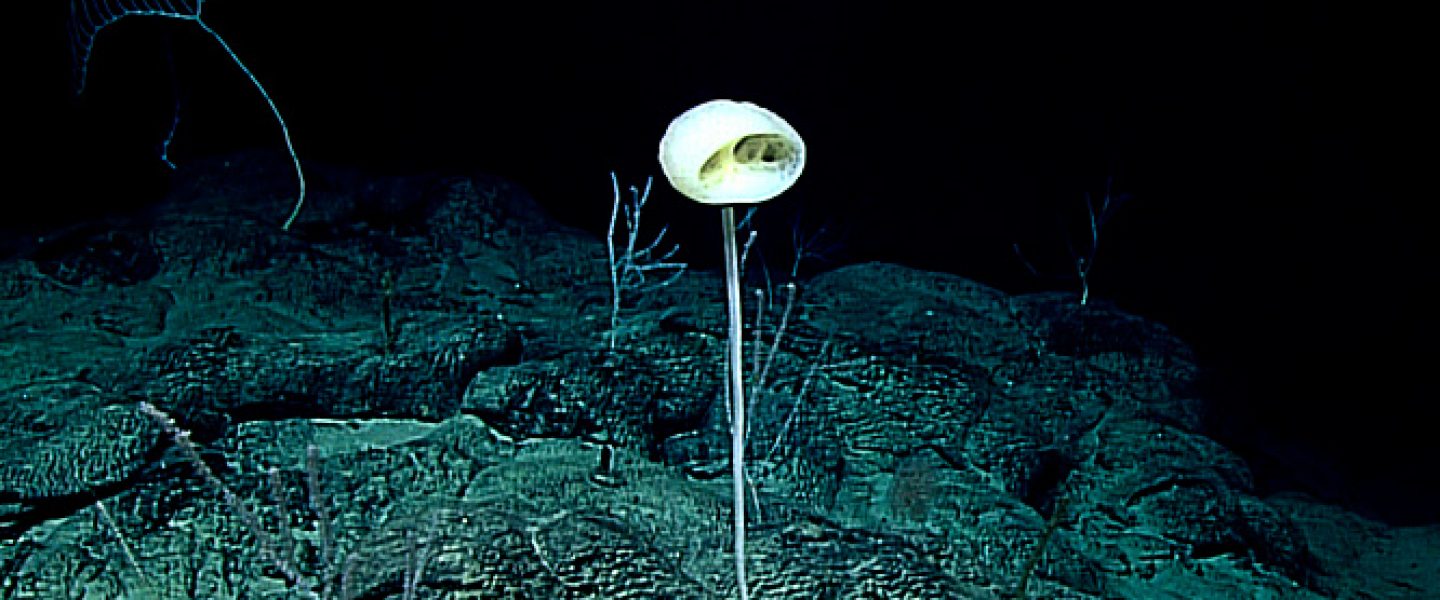|
Listen To This Story
|
PICKS are stories from many sources, selected by our editors or recommended by our readers because they are important, surprising, troubling, enlightening, inspiring, or amusing. They appear on our site and in our daily newsletter. Please send suggested articles, videos, podcasts, etc. to picks@whowhatwhy.org.
Discovered in the Deep: ‘Forest of the Weird’ (Maria)
The author writes, “In 2017, on a submerged volcano a mile and a half underwater in the middle of the Pacific Ocean, a team of scientists were left gasping in wonder at a scene they called the ‘forest of the weird.’ Instead of trees, the forest was made up of oddly shaped corals. … But perhaps the most intriguing was a glass sponge on tall stalks, with what looked like a melon-shaped head with two holes, reminiscent of goggly eyes. This species was nicknamed ‘the ET sponge,’ after the eponymous character in Steven Spielberg’s hit movie. In 2020, it was given the scientific name Advhena magnifica — the magnificent alien.”
The Great Pandemic Swindle: Feds Botched Review of Billions in Suspect PPP Loans (DonkeyHotey)
From POGO: “The Small Business Administration (SBA) flagged nearly 2.3 million Paycheck Protection Program (PPP) loans worth at least $189 billion — about a quarter of the roughly $800 billion lent out — for further review between August 2020 and September 2021, according to a massive dataset obtained by the Project On Government Oversight (POGO) through a Freedom of Information Act lawsuit. There are 4.3 million flags signifying concerns that loans were potentially fraudulent, the recipient was possibly ineligible, or the loans in question merited closer examination for some other reason. There is an average of 1.9 flags for each of the loans identified for scrutiny.”
The Balance of Power Is Shifting Among Nuclear-Energy Titans (Sean)
From Defense One: “A startling statement arrived in July from Fatih Birol, executive director of the International Energy Agency: ‘advanced economies’ no longer lead the global nuclear energy industry. Since 2017, Russian and Chinese reactor designs have accounted for 87 percent of new installed nuclear reactors worldwide. And in this area, as in others in their strategic partnership, China is gradually supplanting Russia, and is set to become the world’s leading nuclear-power producer before 2030.”
Chronic Stress Doubles the Risk of Dying From Cancer, Study Warns (Mili)
The author writes, “Stress not only wears on the mind, but the body too. Our bodies can generally withstand this, but chronic stress takes an enormous toll that can increase fatal cancer risk over time, according to researchers from the Medical College of Georgia. ‘As a response to external stressors, your body releases a stress hormone called cortisol, and then once the stress is over, these levels should go back down,’ explains Dr. Justin Xavier Moore, epidemiologist at the Medical College of Georgia and Georgia Cancer Center, in a media release. ‘However, if you have chronic, ongoing psychosocial stressors, that never allow you to “come down,” then that can cause wear and tear on your body at a biological level.’”
Fossil Fuel Industry Seeks to Expand Free Speech for Corporations and Limit It for Citizens (Laura)
The author writes, “As oil companies push to criminalize dissent, they’re also making the case that climate denialism is protected speech, not fraudulent advertising.”
Chernobyl’s Radiation Turned Its Local Frogs Black (Sean)
From Forbes: “It’s not often that you can watch evolution in action right in front of your eyes, but if you ever manage to visit the Chernobyl Exclusion Zone — which is a most unusual holiday plan — then you may notice its normally green frogs are now black. As black as charcoal briquettes. What happened?”
Close-Up Photo of Jupiter’s Moon Europa Shows a Bizarre Surface (Dana)
The author writes, “NASA’s Juno spacecraft took images of Jupiter’s icy moon Europa during a recent flyby. One of the photos — released [last] week by NASA — offers an intimate view of Europa’s surface features. Juno has orbited the gas giant Jupiter since 2016, but only recently has NASA diverted the spacecraft’s attention to the planet’s moons. Europa is of particular scientific interest because scientists believe a salty ocean lies beneath the moon’s frozen surface.”




